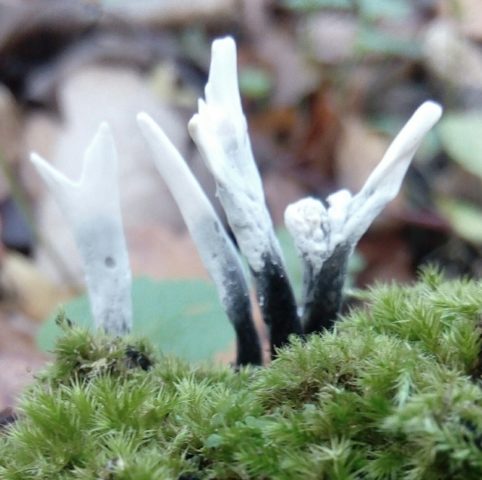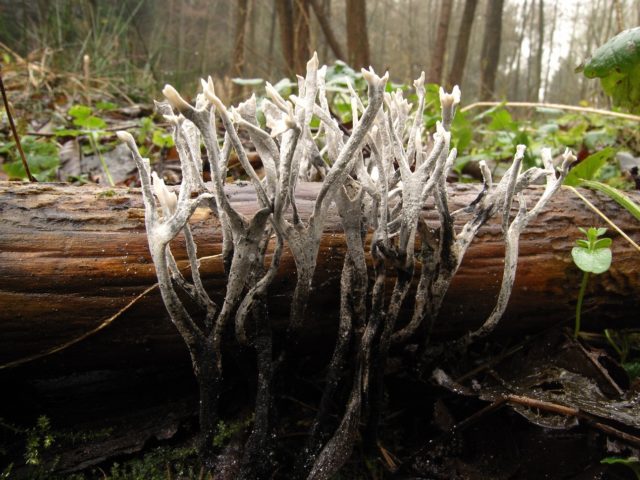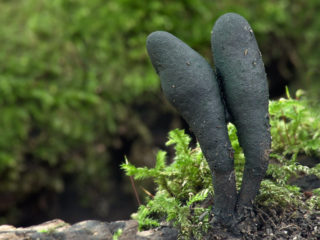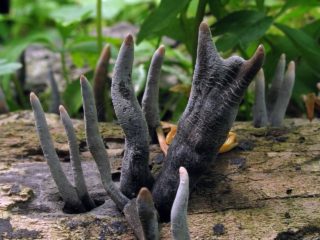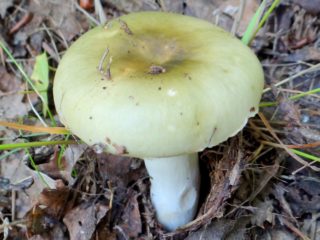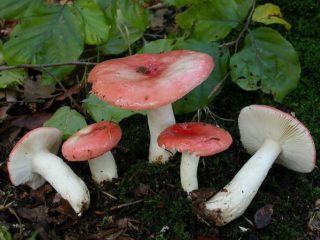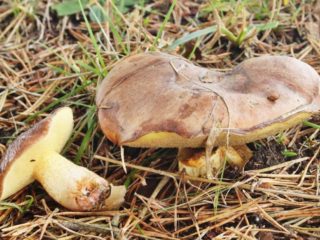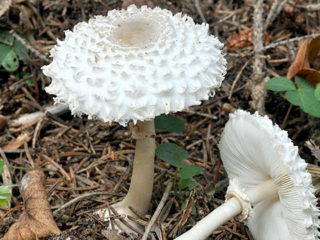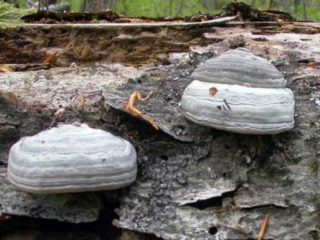Content
There are mushrooms of rather unusual and bizarre shapes, resembling various objects. Xylaria Hypoxylon is a fruiting body belonging to the family Xylariaceae, genus Xylaria, species Xylaria Hypoxylon.
What xylaria hypoxylon look like
The shape of this ascocarp resembles antlers, and from a distance the mushrooms appear similar to coral polyps. They consist of several cylinders emerging from under rotten leaves in one heap. As they grow, the fruiting bodies become flat, curled and bent. The flesh of the body is hard and thin. They are black at the base and dark gray above. It’s not for nothing that the British call it “candle carbon.” Old xylaria take on a charcoal color. The surface in the lower part is velvety, with short hairs.
The height of Xylaria Hypoxylon reaches 8 cm. The width reaches 8 mm.These are marsupial fungi: gray or cloudy white ascospores, similar to buds or cones (perithecia), are scattered throughout the body. Under a microscope, cylindrical bags on a high stalk can be distinguished. They have small holes from which mature spores are released.
Where do xylaria hypoxylon grow?
These mushrooms grow in deciduous, and less often coniferous, forests on rotten leaves or old stumps. On the territory of our country they can be seen in the northern part.
But they are common not only in the northern hemisphere: they are also found in Cuba and even in Australia. Sometimes mushroom pickers come across small groups of “deer antlers.” But this is not common: these are rare species of Xylaria. They ripen in the fall before the onset of winter. But they persist for a long time: even in spring, their dried and blackened bodies emerge from under the snow.
Is it possible to eat xylaria hypoxylone?
The Xiliyaria hypoxylon mushroom is considered inedible due to its small size, lack of a pleasant mushroom taste, and dry pulp. There is no information about the toxicity of these ascocarps.
Medicinal properties
Mushrooms can be used to produce medicines, as their extracts have the following properties:
- They have hemagglutinating effects, which allows them to be used for the diagnosis of various viral diseases.
- Their antiproliferative properties can inhibit the growth of cancer cells.
- They are able to stop the mutagenic effects of chemical radiation.
Conclusion
Xylaria Hypoxylon and its properties have not been fully studied. Research on this fungus is currently ongoing.There are theories about the possibility of using its bioactive components to treat cancer and immunodeficiency.
